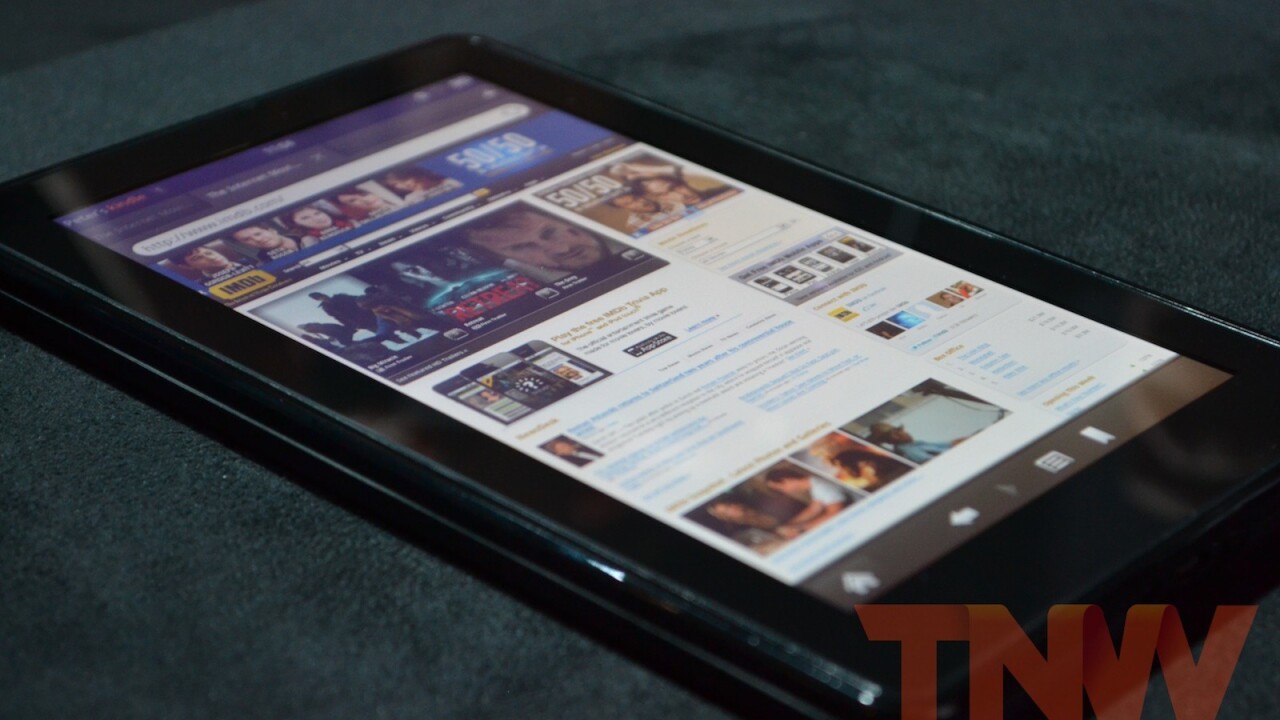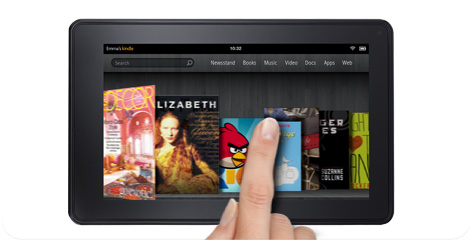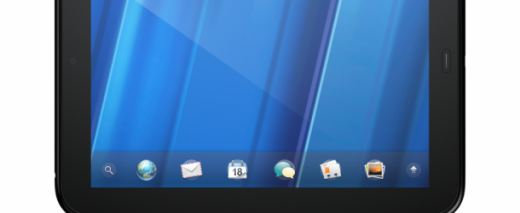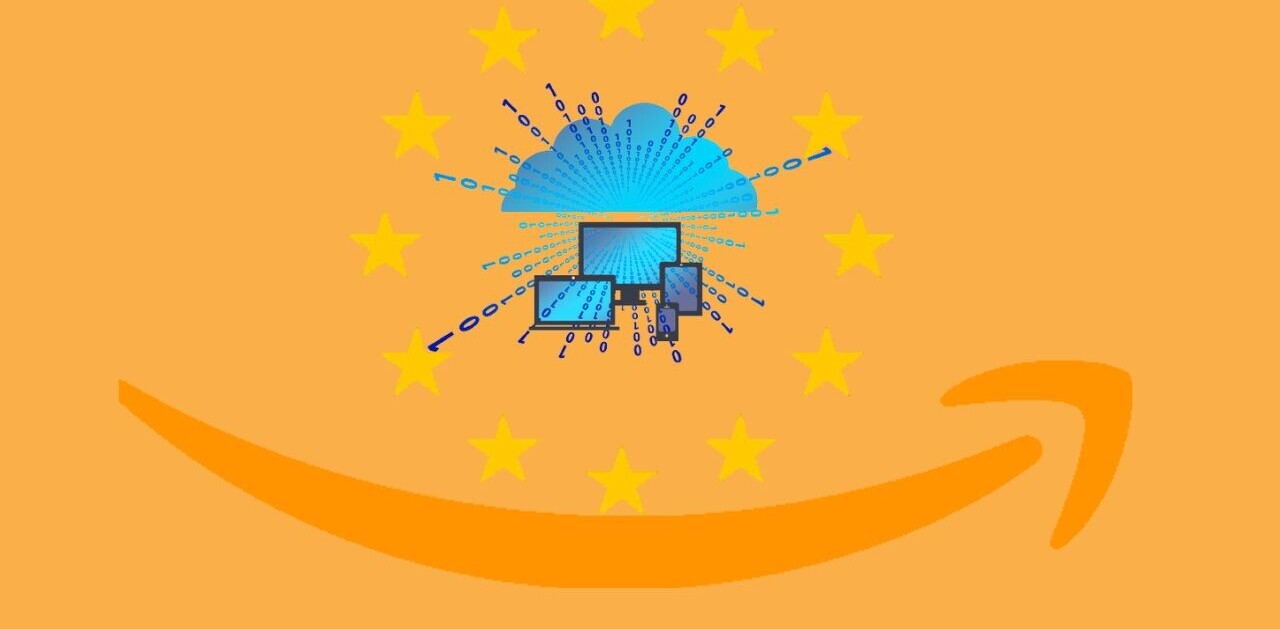
Amazon, the world’s biggest online retailer and new player in the tablet market, is apparently in “serious negotiations to snap up Palm from HP” with the company interested in taking HP’s beleaguered mobile division off of its hands as soon as possible.
Palm, purchased by HP in April 2010 for $1.2 billion, was expected to galvanise its operations once it joined the enormously successful computing giant, combining resources to further develop Palm’s critically-acclaimed webOS mobile platform and create new, powerful smartphones and tablets that were capable of competing with iOS and Android powered devices.
The reality was much harder for HP; its Pre smartphones struggled to sell, as did its TouchPad tablet, resulting in an HP announcement which declared the company was to cease development of its webOS devices, spin-off its PC sales business and look for licensees and a buyer for its webOS division.
It also led to HP’s famous firesale, which saw thousands of TouchPad tablets go on sale for a quarter of their original price, sparking a mad rush as consumers tried to get their hands on one.
Amazon, on the other hand, has been slowly building its portfolio of services over the past year; building out its cloud storage offerings, striking music and video streaming deals with major labels, also launching its own Android Appstore. This week it finally put an end to rumours that it was to release an Android-powered tablet, launching its 7-inch Kindle Fire tablet, tempting consumers not only with promises of a cheap, yet powerful, tablet but a device that would bring all their music, film, files and other media to them without them having to do a thing.
The launch of the Kindle Fire (and its new touch-capable Kindle e-readers) sees Amazon on a roll, its CEO Jeff Bezos is already being compared to Apple’s Steve Jobs, and the buzz around its products can surely only be topped by Apple, with its upcoming iPhone announcement on Tuesday.
Buying Palm would not only make no sense for Amazon – it could actually hurt it in the long run. This is why.
1. Amazon doesn’t need webOS, it has Android – and it’s free*
Amazon’s decision to power the Kindle Fire with Google’s Android platform was not taken lightly, it had made the decision to utilise the Linux-based OS months, if not years, before it started working on the Kindle Fire.
The reason why many believe Amazon will strike rich with its tablet and Kindle devices is that it built tools and services that can exist separate from its own products. Its cloud players, app store and other services can still be accessed from rival tablet devices, but will come together to enrich users of its own tablet (and pump additional revenues into the company to overturn the $10 it loses on each Kindle Fire sold).

Android offers easy customisation (as shown in Amazon’s interpretation of the platform), it already has huge market penetration – so that consumers will be familiar with how it operates – and it is free. Microsoft might be sniffing around Android device makers and breathing down their necks to sign license agreements for its Linux patents, but Google offers its Android platform for no charge, publishing the source for device makers and developers to modify the code as they see fit.
Amazon’s decision to move away from a platform that will, for the near future at least, remain available to the company no matter how much Google updates and evolves its feature-set would see the company take a huge risk with a platform that is still largely unknown. Consumers are familiar with Android (even if it is a heavily modified version) and Amazon already develops its own applications and services for the system, doing that all over again for webOS would not only waste resources, it would undermine the devices it has already launched and sold to customers.
Fragmentation is already a big issue in the smartphone and tablet market, Amazon will not want to add to it with a number of devices that run different platforms.
2. Palm is a broken company and webOS is a dying platform
Business Insider argues that Amazon’s purchase of Palm would be a good thing, its first two reasons being that HP doesn’t want to make tablets and mobile phones and that Palm is “going to be cheap”:
HP isn’t going to do anything interesting with webOS. HP is pivoting to enterprise software, doesn’t want to make tablets and mobile phones, and is generally bogged down in its internal vicissitudes.
Palm is going to be cheap. Right now, all Palm has is good intellectual property, and maybe a few talented people, including former Palm CEO Jon Rubinstein, a highly regarded industry executive, who now has a dead-end “product innovation” job at HP and, VentureBeat notes, recently joined Amazon’s board. Amazon can almost certainly buy Palm for a fraction of its original price.
Others, including myself, will argue that this is exactly why Amazon shouldn’t buy Palm – the company has not done all it can to save the platform and the company will be cheap for a reason – because HP doesn’t want it any more.
If one of the world’s biggest technology and computing companies can’t work with Palm’s talented design team, the idea that Amazon would fare any better with the same team requires some reaching.
In August we reported that before the HP’s TouchPad tablet and Pre smartphones were even released, everyone within the webOS team wanted its new device “gone”. According to our sources, the hardware reportedly stopped the team from innovating beyond certain points because it was slow and imposed constraints, which was highlighted when webOS was loaded on to Apple’s iPad device and found to run the platform significantly faster than the device for which it was originally developed.
With a focus on web technologies, webOS could be deployed in the iPad’s Mobile Safari browser as a Web app; this produced similar results, with it running many times faster in the browser than it did on the TouchPad. Ultimately, when HP announced its acquisition of Palm, the computing giant had already built the TouchPad hardware that sits on the shelves today. Put simply, the TouchPad was a two-year old piece of hardware that the webOS team equipped with their tablet-friendly platform.
Palm might not have had much say in HP’s decision to develop products that were ultimately out of date but its engineers were still part of a company that limited innovation. Consumer confidence in Palm and its mobile platform have been severely impacted as a result of HP’s decisions, despite the fact that webOS has proven itself to be a very capable platform.
Demand for webOS smartphones manufactured by Palm was limited, HP haemorrhaged money with severe operating losses when it launched updated versions of Palm’s products. Does Amazon see something that HP couldn’t and believe it can reverse the fortunes of the stricken platform? Until the deal is confirmed, the answer remains no.
3. Amazon’s Lab126
If Amazon acquired Palm, it would inherit the company’s webOS engineers, designers and innovators. However, Amazon has its own mobile division (although it isn’t expressly referred to as one), a team that has helped to design, develop and create the retailer’s entire Kindle line.
In August 2010, Lab126 began advertising for a Supply Chain Project Program Manager, Hardware Engineer and RF Systems Engineer. Whilst the openings didn’t specify tablet devices or Google’s Android operating system, sources told the New York Times that Amazon was looking to into building other gadgets (besides the Kindle) that it could sell to consumers:
One of those people said building more hardware products would be a means to an end. This person said Amazon wants to make more devices for consumers that would enable simple purchasing of Amazon content including its digital books, music and movie rentals and purchases.
A year later, the Kindle Fire was unveiled – all but confirming that Amazon’s 2010 hirings were for engineers that would be instrumental in the device’s creation.
Fast forward to today and Lab126 has around 190 job openings on its Careers website; not all of them are for engineers or developers but the majority of them are. Amazon is actively looking to recruit specialists in the mobile and technology industry, building up its own presence.
Whilst the acquisition of Palm would certainly fill some of these positions, the company would seemingly acquire a number of employees that it either had an abundance of or would not need within their organisation. A smart approach would be to actively recruit the individuals that Amazon needs from Palm direct, tailoring its workforce to its own specification – not via the costly and heavily logistical route of acquiring, hiring and possibly firing new employees incorporated via a merger.
Just days before the Kindle Fire launched, reports emerged that Amazon’s first tablet was not as carefully thought out as it should be, with Amazon engineers outsourcing the design of the Kindle Fire to Taiwan-based Quanta Computer, the ODM (Original Design Manufacturer) that helped created RIM’s BlackBerry PlayBook. As Ryan Block wrote at gdgt:
Amazon’s team determined they could build a tablet without the help and experience of Lab 126, so they turned to Quanta, which helped them “shortcut” the development process by using the PlayBook as their hardware template. Of course, it’s never quite that simple, and as I’m told Amazon ran into trouble, and eventually sacrifices were made (like using a slower processor).
Although Amazon did refresh the ID of their PlayBook derivative, I’m told that this first tablet of theirs is “supposed to be pretty poor” and is a “stopgap” in order to get a tablet out the door for the 2011 holiday season — which doesn’t exactly leave the best taste in my mouth. But it’s also not the most uncommon story, either: when you’re breaking into a new market, sometimes you have to do whatever it takes to get in the game. You may remember how crappy the original Kindle was compared to later models!
The key sentence in the above quote is that Amazon may have had to “whatever it takes to get in the game”. The Kindle Fire has been well received thus far, although the mobile industry is yet to get a proper hands-on, but with its content-focused approach, the retailer can afford to start off basic and offer its device cheap and then innovate – as it did with its Kindle devices.
This also raises another interesting point; Amazon will have had to independently forge its own connections to suppliers, manufacturers and licensing partners, something that would have cost countless millions in research and contractual fees. That said, with those connections already made, Amazon now has its foot in the door and if its device sells well (analysts are already forecasting sales of 4 million units by the end of the year), the company is in great position to negotiate better deals and lower its production costs for its future devices.
The news of Amazon’s interest in Palm comes so soon after the release of its new tablet that the company must not be interested in Palm’s hardware and software – it could be interested in its intellectual property.
Conclusion
Given the amount of money, time and resources Amazon has invested in the first version of its tablet, the retailer’s interest in Palm could solely be a preemptive move to better protect itself from future litigation – most notably Apple and Microsoft.
The New York Times spoke with Jordan Rohan, a Stifel Nicolaus analyst on Friday, who told them:
“I don’t think anyone believes that Apple and Amazon will not have significant competitive skirmishes in the future. The value of I.P. related to mobile has gone up—even if there was no palm devices in the future, it would still be valuable.”
It is not known how valuable Palm’s patent portfolio is, although Todd Bradley, an executive vice president at H.P, did say last year that it “possesses significant I.P. assets”.
If Amazon was to buy Palm purely for its patents, it is possible that the mobile company would drive up its price (much as Motorola Mobility did when Google negotiated a takeover) to ensure it wasn’t undersold and to appease employees who may not be incorporated into Amazon’s mobile division.
Amazon has taken its first steps into the mobile space, standing apart from Apple in its approach and providing all other Android tablet makers with a serious problem. Pricing the Kindle Fire at $199.99 won’t cannibalise iPad sales, it will undermine products offered by Samsung, HTC, RIM, Motorola and others, that simply can’t compete on price because they don’t have the value-added services (although Samsung and HTC have launched their own content platforms) that can recoup costs should they slash their pricing.
To move for Palm and adapt its services for webOS would almost see Amazon doing itself a disservice, but not trusting in its own belief it can create its own world-beating devices and services using a platform that is widely used, easily customisable and ultimately free.
Microsoft may now move to seek licensing for Amazon’s use of its Linux patents with the Kindle Fire, forcing Amazon’s hand, but the retailer will be well aware of the options available to it.
Get the TNW newsletter
Get the most important tech news in your inbox each week.






